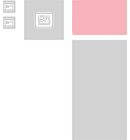
SYDNEY, Australia — It was the last night of fashion week. A flurry of sakurapetals came raining down on the runway, while Japanese performer Yumi Umiumare danced to the urgent rhythms of koto and taiko drums, positioned under a great cherry tree blossom. Last week’s Mercedes Benz Fashion Week Australia resort event was certainly a surprise to some of the international buyers who travelled up to 24 hours to get to Sydney.
Few were expecting an extravaganza like this from Camilla, which at 15 years old, is practically a heritage brand by antipodean standards. But Camilla’s Japanese theme wasn’t the only sign of Australia’s increasingly cosmopolitan approach to the fashion business. The brand is emblematic of a much wider internationalisation gripping the local industry — and the retail fault lines that are emerging as a result.
Like many Australian luxury brands, Camilla was first stocked by one of the country’s heritage department stores at a simpler time when upmarket players like David Jones and Myer would duke it out for consumers and brands alike, making the stores’ rival buyers the most important merchants in the market. But a glance at today’s front row at Camilla’s latest runway reveals a very different group of power players occupying the best seats, from international bricks-and-mortar peers like Saks Fifth Avenue to “online invaders” Net-a-Porter and MatchesFashion.
It’s a similar story at 11 year-old Sydney label Romance Was Born. “When we first started the business, majority of our wholesalers were made up of multi-brand Australian storefront retailers,” says Anna Plunkett, who designs with partner Luke Sales. “Now, that number is sitting at less than half. The introduction of international e-commerce sites definitely changed the game and opened our market.”
The online invaders made a big impression on industry leaders at last week’s designer showcase. “I have seen more serious buyers at this fashion week than ever before,” said editor-in-chief of Vogue Australia, over the phone during the final days of Mercedes Benz Fashion Week Australia (MBFWA).
Held against the industrial backdrop of Sydney’s Carriageworks, international buyer attendance to MBFWA rose by 51 percent in 2017, a trend which continued this year. However, a deeper look inside the country’s retail market reveals a different story — one of a desperate battle between the old guard and new.
Facing a battle within a battle
The latest wave of disruption in Australia comes at an already challenging time for retailers across the world and across all value segments. Growth in Australian retail sales slowed to 0.2 percent quarter-on-quarter in the first three months of 2018, against a 0.8 percent increase in the previous quarter, according to a recent Financial Times report.
Heritage department stores Myer and David Jones, brick and mortar giants that were once top stockists for local and international brands alike, are in a tailspin. Meanwhile, global brands across every category — from fast fashion to luxury — are seizing opportunities in the fast developing market, causing pricing wars that rattle domestic retailers.






















